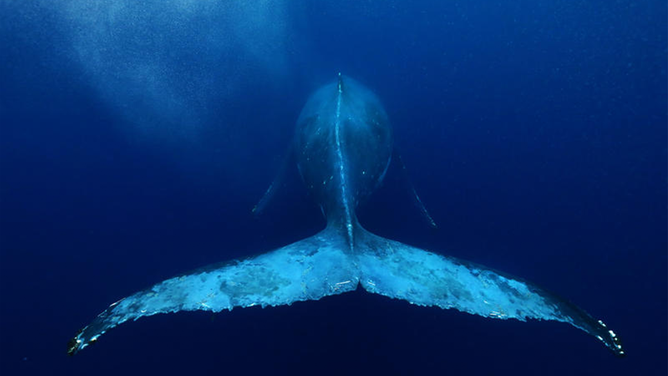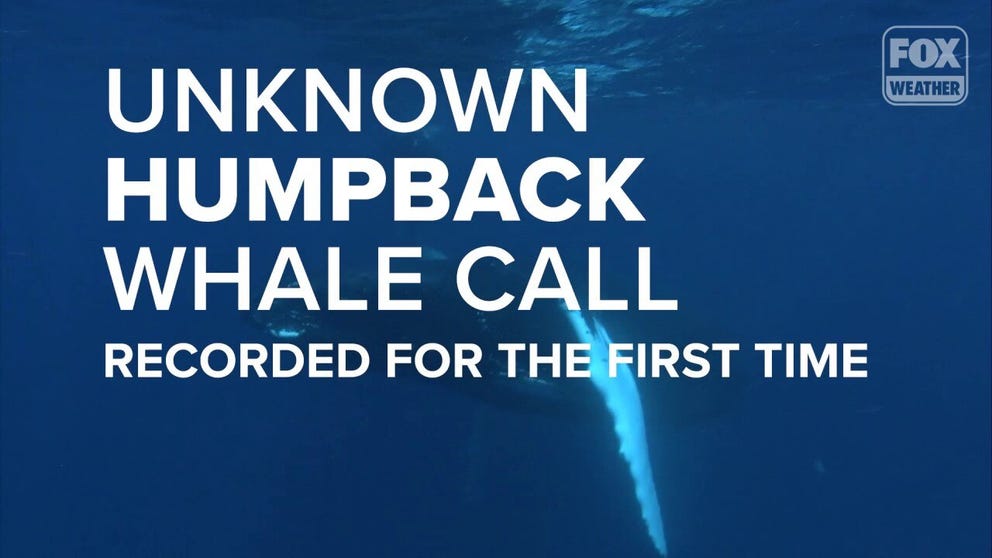'Gunshots' ring out beneath the ocean's surface. Here's why scientists say humpback whales are to blame
Scientists documented 600 whale calls over a period of 11 days in November of 2019 at the Vema Seamount in the Atlantic Ocean, which is about 621 miles off the coast of South Africa.
Listen: Previously unknown humpback whale call heard for the first time
Researchers were able to record a humpback whale call that had been unknown previously - until now.
LONDON – For the first time, scientists have recorded an unusual sound made by humpback whales that was previously unknown to researchers.
Scientists documented 600 whale calls over a period of 11 days in November 2019 at the Vema Seamount in the Atlantic Ocean, which is about 621 miles off the coast of South Africa.
HOW TO WATCH FOX WEATHER ON TV

FILE - Humpback whales enjoy the warm waters of the Pacific ocean, Tonga.
(Paul Hilton/Greenpeace)
That research was conducted during a Greenpeace International expedition and was led by Stellenbosch University in South Africa, as well as the University of Exeter in the United Kingdom.
During the expedition, scientists discovered and recorded the previously unknown "impulsive sound" that was later called the "gunshot" by researchers – and they have no idea what the sound means.
GROUNDBREAKING RESEARCH SHOWS GREAT WHITE SHARKS MAY CHANGE COLOR TO BETTER HUNT THEIR PREY
"We still don't fully understand what the 'gunshot call' means, and it is fantastic to record it in humpback whales for the first time," said Kirsten Thompson, Ph.D., of the University of Exeter and Greenpeace International Research Laboratories, in a statement in April. "It really shows how much we still have to learn about these incredible animals."

Scientist Kirsten Thompson listens to whales sounds from the Hydrophone.
(Abbie Trayler-Smith/Greenpeace)
Thompson said seamounts provide a rich habitat for many migratory species, including humpback whales.
Moored hydrophones, which are basically underwater microphones, were used to monitor the humpback whales in the area, and most of the whale calls were detected over a period of three consecutive nights.
Most of the sounds detected were low "whups."
The "whup" sounds are pretty common and are known to be used between a mother and her calf as a way for them to locate each other. They also use that sound while feeding, which confirmed that the Vema Seamount is a crucial feeding ground for the humpback whales.
"Our study confirms that the whales passing Vema (Seamount) during their long journey across the oceans are feeding," Thompson said.
The area is partially closed to fishing.
After its discovery in 1959, the Vema Seamount was heavily overfished and is now recognized as a vulnerable marine ecosystem because of its unique biodiversity.
"Fifty years ago, governments came together to turn around the fate of humpback whales and seeing many populations thrive gives us a glimpse of their lives in the high seas," Thompson said. "Only 3% of the global oceans are properly protected, and that's nowhere near good enough to safeguard habitats that whales rely on."
